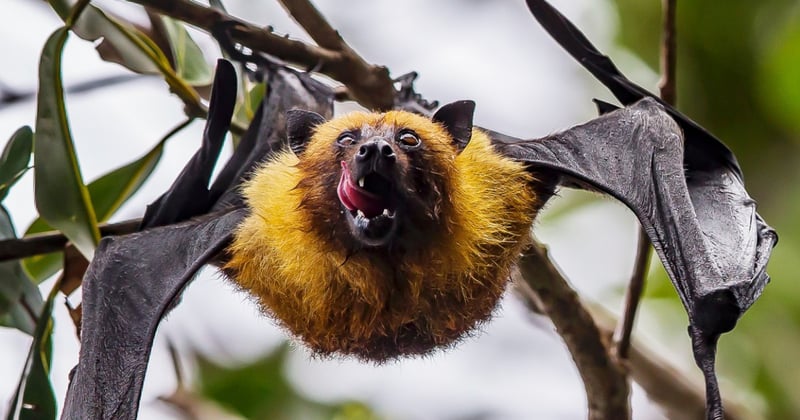
The coronavirus and wildlife: What’s the connection?
News
The source of the coronavirus pandemic (COVID-19) is widely believed to be a wet market in Wuhan where both dead and live animals were sold.
Photo by Thomas Lipke on Unsplash
How do viruses jump from animals to humans?
We all carry viruses, people and animals. Because each virus has evolved to a specific host species, it’s not easy for a virus to jump to another species. When this does happen, it’s by chance, and it usually requires a large amount of contact with the virus.
When a virus jumps from an animal to a human, it’s called a “zoonotic disease” (also known as a zoonosis).
Why did COVID-19 transmit to humans?
It’s believed the virus started in a wet market in Wuhan, China. These types of markets have a higher risk of viruses jumping from animals to humans because of poor hygiene and close contact.
Animals are kept in crowded cages, and markets are packed with cages of different species of both wild animals and farm animals – allowing viruses to spread from species to species. Hygiene standards are even more difficult to maintain at these markets with live animals kept and butchered on site.
Scientists are still working to identify the species and intermediate hosts that transmitted COVID-19 to humans. With so many species coming into close contact, the virus might have started with a host species like a bat and jumped to other species before jumping to humans. Whether it started with bats, snakes, pangolins or another species, it can all be traced back to how we treat animals.
When animals are stressed and kept in crowded, unsanitary conditions it creates a breeding ground for the emergence and spread of infectious diseases that can be transmitted to humans. These conditions for animals exist globally and it’s time to end it.
According to the World Health Organization, 75% of new or emerging infectious diseases over the past decade originated from animals and principally from wildlife; SARS, MERS, Ebola, H5N1 and now COVID-19.[1]
We make the situation even worse by ignoring animal welfare. The animals in these markets are kept in stressful conditions. Stress reduces the ability to fight off antigens, which means these animals are even more vulnerable to infection.
Humans create these situations because we treat animals like a commodity.
What’s the solution?
We need to rethink of how we treat animals. If we continue to create these environments where diverse species that would never encounter each other in the wild are kept in close proximity and in crowded, unsanitary conditions, we’re going to see more public health risks like this pandemic.
This pandemic is the latest wake up call that we must come together to end the cruel exploitation of wild animals. No one can ignore the danger of eating wild animals, using them as medicine, exploiting them in the name of entertainment or keeping them as pets.
Positive change is happening
On January 26, China imposed a temporary nationwide ban on all wildlife trade, and on February 24, China’s National People’s Congress (NPC) passed a law to permanently ban the farming of wild animals for consumption, including stronger enforcement, and to crack down on the illegal wildlife trade.[2]
Our colleagues in China are working diligently to ensure the current ban is extended to restrict the farming and trade of wildlife for other purposes such as traditional medicine, pets and entertainment to prevent future pandemics and animal suffering. They’re advising the government that animal welfare be front and centre of any effective laws to protect public health and safety from deadly zoonotic diseases like COVID-19.
While advocating for stronger laws to stop the source of the pandemic, our team in China have also been influencing Chinese companies to do their part. Youzan, a large online tech company recently committed to stop promoting and selling wildlife for food, pets or medicine. And YaoPharma just became the third pharmaceutical company based in China to join our movement and commit to not sell or promote wildlife-derived medicine.
The Vietnamese government also recently introduced a new directive to stop the consumption of wildlife [3]. These movements are a promising start, but more needs to be done. Unless these bans are made global, permanent, comprehensive and properly enforced, the risk will never go away.
Sources:
[1] World Health Organization. “Neglected zoonotic diseases”
[2] Standing committee of the 13th National People’s Congress Decision “Comprehensively Prohibiting the Illegal Trade of Wild Animals, Eliminating the Bad Habits of Wild Animal Consumption, and Protecting the Health and Safety of the People” http://www.loc.gov/law/foreign-news/article/china-legislative-decision-passed-to-punish-trade-and-consumption-of-wild-animals-amid-covid-19-epidemic/
[3] The Guardian. “Billion-dollar wildlife industry in Vietnam under assault as law drafted to halt trading” https://www.theguardian.com/environment/2020/mar/18/billion-dollar-wildlife-industry-in-vietnam-under-assault-as-law-drafted-to-halt-trading
When animals are stressed and kept in crowded, unsanitary conditions it creates a breeding ground for the emergence and spread of infectious diseases that can be transmitted to humans. These conditions for animals exist globally and it’s time to end it.